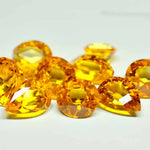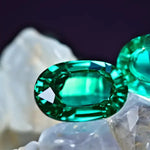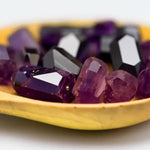What is Historical Filigree Art Jewelry ?
- by samet gulkaya
-

Historical Filigree Art Jewelry
History of Filigree:
Filigree, derived from the Latin word filum (“thread”), is an old art style that has been valued since 2500 B.C.E. Filigree is the openwork pattern of an elegantly intertwined bouquet of fine silver, gold, or other metal threads that is twisted and molded to nearly resemble lace. Originally, this metal lacing was employed to embellish personal decorations such as manuscript covers, armor, religious regalia, and royal crowns. Modern definitions of filigree include cast, punched, or laser-cut flat components with numerous tiny holes.
Filigree has a long history that spans numerous ancient civilizations, from Egyptian to Persian, and continues through the Greek, Early Renaissance, Romanticism, and Art Nouveau eras. Distinguished drawings of filigree are valued today, with numerous items housed in sites across the globe including the Vatican Museum in Venice, the Metropolitan Museum of Art in New York, the Louvre in Paris and the British Museum in London.
Filigree has retained its allure through thousands of years, dating back to its creation during the Egyptian era. Gemstones such as pearls, garnets, and sapphires were not used into Filigree work until the late 4th century, during the Greek period. Filigree ornamentation remained consistent until its change in the early twentieth century, denoting an impression of elegance and sophistication. During his reign, fashion-forward King Edward VII reinvented the original Filigree with a monochrome appearance for jewelry creations by mixing metals such as platinum with colorless gemstones such as diamonds. The craft of Filigree jewelry became highly popular during the Art Nouveau era.
Although making Filigree is specialized ability for today’s jeweler, in ancient times this entirely handmade method was a standard competence for all jewelers. Today’s technology enables Filigree patterns to be machine-cast and mass-produced, making these components cheap to the modern jewelry designer.
Filigree has been built in various civilizations over the millennia and varies in form and design. However, the grace, beauty, and exquisite craftsmanship of Filigree have kept it fascinating and appealing. Filigree is now available in a variety of jewelry styles for both men and women.
Origin of Filigree Art:
It is made of delicate metal strands that have been skillfully fashioned to create an outstanding combination of old and modern art. Originating in Mesopotamia and Egypt (said to be the first countries to use Filigree art), the allure of Filigree Jewelry expanded over the Asian continent around 2500 BC. A pattern of Filigree motifs utilizing both gold and silver wires evolved, which was commonly known as telkari, and was specifically produced by craftsmen from Midyat city in Mardin region of upper Mesopotamia. Many experienced artisans continue to create telkari jewelry, which is very complex and delicate, even today.
A high degree of similarity is found in Indian and Greek Filigree arts due to the same kind of patterns and processes followed for creating filigree jewelry in both countries. This gives a good proof of the common influence on artistic patterns in both countries which came out in the jewelry pieces woven by them. This art form also gained some recognition in Italian and French metalwork from 1660 to the late 19th century.

Ancient Art Form:
This beautiful, delicate metal technique has a 5000-year history.
It is one of the oldest and most beautiful art forms that man has created. Filigree is entirely handmade and takes hours of deep concentration to complete. The carefully guarded craft was passed down over generations. By 2000 BC, granular work, Filigree, and repoussé were all recognized and practiced on the Greek Island of Crete.
Patterns of gold wire are put down with remarkable delicacy on a gold backdrop in jewelry found in Phoenician locations such as Cyprus and Sardinia. The art is thought to have reached its pinnacle in the Greek and Etruscan Filigree of the 6th to 3rd century BC.
A number of earrings and other personal decorations in this type were discovered in central Italy and are now housed in the Louvre and the British Museum. The Hermitage Museum in St.Petersburg houses an incredible collection of jewels from Crimean graves.
From around 323 BC, Greek Filigree began to influence styles from Europe to India. When Alexander the Great brought his abundance of gold and silver from the Phoenicians, Egyptians, and Persians, the use of Filigree expanded not just to set stones, but also in a variety of other decorative purposes.
However, by 133AD, Rome had seized control of the Greek Empire, and Roman artisans employed much simpler settings with their precious stones, so the intricate wirework went out of favor once more.
If we try to comprehend the complexity of Filigree art, we will see that jewelry is only one component of the creations produced with Filigree. Aside from that, there are many more intriguing and beautiful items made with Filigree, including as ornamental animals, temple inscriptions, temple replicas, and idols of gods and goddesses. Some commonplace things, such as vermilion containers, spoons and bowls for a newborn’s first meal, and betel nut boxes, are given a particular significance by being crafted in exquisite designs with silver Filigree. Nowadays, the market offers a broad range of Filigree jewelry, mostly consisting of brooches, hairpins, and earrings, which is very popular.




